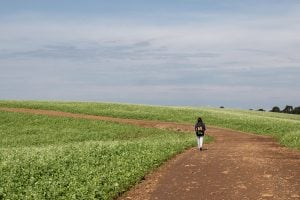China’s rise as an economic power has had a significant impact on the shaping of international relations. The Belt and Road Initiative (BRI), launched by Chinese leader Xi Jinping in 2013, has been a key strategy for expanding Chinese markets through infrastructure development and global economic integration programmes that complement the flow of trade.
Latin America has not been excluded from this process of transformation of the international scene. Despite some attempts to promote models that add value domestically, the economies of Latin American countries are mainly based on the exploitation and export of natural resources, with high levels of dependence on financial capital. In recent years, the countries of the region have sought new political-economic partnerships that allow them to diversify their sources of investment and markets.
The Economic Commission for Latin America and the Caribbean (ECLAC) has investigated the reasons for the economic sluggishness that has long troubled Latin American countries, and the weaknesses that have prevented modernisation and consequent development. The ECLAC experts identified a dominant pattern in international relations that established conditions of development in the “centre”, and underdevelopment in the “periphery”.
Over several centuries, Latin American countries have been inserted into a situation of subordination and dependence on the developed economies – the “centre” of the international system – a situation that has deepened with greater globalisation. This relationship of dependence has also been reproduced within Latin American countries. Within Argentina, for example, there are provinces with peripheral economies, and more central provinces. These less developed provinces face a situation of “double periphery”: they are on the periphery of a state which, in turn, is peripheral in the international system.
In Argentina, the provinces that make up this double periphery are geographically located in the north-west and north-east. These provinces have historically shown little diversification of their productive activities: their economies revolve around the exploitation of their natural resources without bringing additional value to the local economy; they are far from the country’s main distribution and consumption points; and they depend on financing from the federal state.
Since the 2010s, the provinces of the double periphery have deepened their international links with the aim of improving their conditions and supporting local development. This is where an apparent complementarity with Chinese interests in the region emerges, as I explain in a recent research paper on China’s role in the reconfiguration of these peripheries. Northern provinces such as Jujuy and Salta have been key players in the relationship with China, diversifying their areas of work with the country.
Jujuy, for example, has formalised a twinning agreement with the Chinese province of Guizhou, promoting academic and cultural exchanges. It has also been a pioneer in the development of energy projects alongside Chinese companies, such as the construction of the Cauchari solar park and lithium production projects.
Salta, for its part, has signed strategic agreements with Chinese institutions to promote cultural activities, and at the same time attract investment in order to inaugurate its first lithium carbonate production project in 2024. Initiatives such as these are, to a greater or lesser extent, being replicated in different Argentine provinces.
The strengthening of sub-national ties with China has had significant implications for both the provinces and the federal state. Chinese investments have responded to funding demands that national governments have been unable to meet. However, this intensification of links has revealed some disarticulations between the provinces and the federal state.
Among the challenges highlighted, at both the national and provincial level, is the lack of a defined model for lithium exploitation, and the absence of policies that encourage the transfer of knowledge and technology from foreign investment. The Argentine provinces that form part of the so-called “lithium triangle” are developing projects without bringing added value locally to the extracted lithium. Political swings amid changes in the Argentine presidency have also generated some uncertainties in sub-national initiatives, affecting continuity and causing discomfort for Chinese investors and companies. In general terms, there is a lack of defined policy in relation to the lithium production model, which could articulate both national and sub-national interests.
Consequently, the provinces of the double periphery have found in China a key partner to promote their development, especially through renewable energy and lithium projects. For Chinese investors and companies, initiatives such as these allow them to locate firms and capital while at the same time securing essential elements such as lithium, which helps the country’s industry to maintain leadership in the energy transition. For Argentina’s double periphery, these projects make it possible to diversify local productive activities. However, there are some warning signs linked to the lack of technology and knowledge transfer, and environmental impacts, among others.
In order to maximise the benefits to Argentina of a sometimes-challenging relationship with China, it is essential to improve coordination between the national and sub-national levels, and to develop policies that promote technology transfer and the creation of value chains from available natural resources. There is a clear need to integrate the development interests of the provinces into the design of Argentina’s foreign policy – a challenge that is still yet to be taken on.










